Nick Cave is just about to finish his nine-date, seven-city solo tour
of the US. It seemed odd that Nick would have started off the US-dates
at a place most known for the New Orleans' Symphonies: the Orpheum
Theatre. After arriving and seeing the set, though, it was obvious that
Cave was going for a very much more sleek, less rock-n-roll atmosphere.
Too bad much of the crowd could not grasp this distinction.
Arriving at the show, which was the only date in the country that did
not sell out, I was faced with an extremely eclectic crowd: from
teenaged goths to swanky yuppies to drunken 40-something assholes. The
show started with Kelly Hogan, who had a strange country-esque
shoe-gazer style. The highlight of her show was her performance of the
Magnetic Fields' "Papa was a Rodeo," though even that was overlooked
because everyone wanted Nick Cave.
The stage looked simple: grand piano, drums, electric violin, electric
bass, and an accordian. And hanging from the ceiling were four glowing
stars set to nice blue curtains. The mood was definitely not hardcore
Birthday Party/Bad Seeds rock'n'roll.
Finally Nick Cave came out, put his cigarette out, and sat at the
piano. Someone shouted the question "Can we smoke too, Nick?" and he
replied "Absolutely not-this is a NO SMOKING venue," and afterwards
chain smoked throughout his whole performance. He opened with an
assaulting version of "West Country Girl," which he played alone.
Soon he was accompanied by Jim White (drums) and Warren Ellis
(accordian/violin) of the Dirty Three and Susan Strenger (bass) of Big
Bottom, and played mostly recent Bad Seeds material very low-key
styled, though he did throw in an old Birthday Party song, "Wild
World," which picked up the pace on drums and electric violin, while
Nick pounded harder at the keys and shouted a bit. My highlights were
definitely "Stagger Lee," set to a cabaret-style beat with the harsh,
shrill ending sounds being replaced by electric violin. The line "I'd
crawl over fifty good pussies just to get to one fat boy's asshole."
definitely threw aback the uptight old men serving as ushers to the
rather unpredictable crowd.
Throughout the whole show you could hear Nick Cave's mental tempo being
tapped out by his foot below the piano. With that known, no one could
really understand why some fucking asshole kept talking loudly during
the first half of the performance. Eventually security was called to
deal with him, and to deal with the massive amount of people who
ignored the "NO SMOKING" signs because of the "NO RE-ENTRY" signs. It
was a strange show.
Along with classics like "The Mercy Seat" and "Into My Arms," he played
a few new tracks from the new album, I Sat Sadly Beside Her, including
"No More Shall we Part" the great "God is in the House," which is a
mock-Christian anthem about a town where they "bred all our kittens
white so we can see them in the night, since God is in the House." The
crowd responded with a "Hallelujah!"
It was definitely a great performance. Nick Cave's amazing stage
presence shined during the encore, where he played "Henry Lee," "the
Ship Song," "Loom of the Land," and "Straight to You." Lastly he
performed "Little Emtpy Boat" from King Ink II to end the night with a
"fuck you" to the audience that left everyone laughing their ways to
the exits.
 Jean-Michel's second CD release is an excellent follow-up to Marshmallow Rooms (see the brain vol 3 issue 17),containing some pretty ambience mixed with electro-crunchiness, whackedbreakbeats, and old-school techno, providing a an aurally stimulatingexperience. Like most of my favorite intelligent-techno bands,Jean-Michel expertly oscillates his effects and adds and subtractssounds to keep things evolving, as if a story is being told. But whatsets him apart is his excellent use of acoustic guitar to set theelegent mood, juxtoposed with a seasoning of brief splashes ofhighly-processed, other-worldly noise, guaranteed to grab yourattention.
Jean-Michel's second CD release is an excellent follow-up to Marshmallow Rooms (see the brain vol 3 issue 17),containing some pretty ambience mixed with electro-crunchiness, whackedbreakbeats, and old-school techno, providing a an aurally stimulatingexperience. Like most of my favorite intelligent-techno bands,Jean-Michel expertly oscillates his effects and adds and subtractssounds to keep things evolving, as if a story is being told. But whatsets him apart is his excellent use of acoustic guitar to set theelegent mood, juxtoposed with a seasoning of brief splashes ofhighly-processed, other-worldly noise, guaranteed to grab yourattention.

 Christopher Penrose is a thirty something Californian who has receiveddegrees in music composition at UC San Diego and Princeton University.He currently resides in Japan and works as a researcher, composer anddeveloper of audio software for Apple's Rhapsody operating system. Thetwo 20 and 24 minute tracks on this disc are likely products of thatsoftware, possibly his image to sound program. Penrose is obviouslymaking a statement on the Americanization of the world as the digipackfeatures clever artwork by him of Stars and Stripes flags with thestars replaced by other nations flags and corporate logos. The titlerefers to 'one who vociferously supports one's country, especially onewho supports a belligerent foreign policy', no doubt a phenomenon hehas experienced firsthand in Japan. The title track churns throughcountless processed samples and passages, far too many to detail oreven identify, but most are seemingly random snippets of sound andmusic interspersed with several spoken statements: "here is what youthink", "be a winner at losing", "I love my body", "she is America",etc. "MK/Ultra" features an 8 minute wavering synthetic drone, apanicked phone call to a radio station from a recently dischargedsoldier who believes aliens are among us, and a numbered list ofunusual life lessons and suggestions delivered in a digitized voice,culminating with "walk slowly, but kill that motherfucker if he triesto take your money" repeated ad nauseam. Penrose's compositions arejust plain odd, both in content and juxtaposition, but also interestingwith a well balanced mix of ambient, noisy, serious and humorousmoments. Though, without the artwork I'd be somewhat puzzled as to whatit's all about ...
Christopher Penrose is a thirty something Californian who has receiveddegrees in music composition at UC San Diego and Princeton University.He currently resides in Japan and works as a researcher, composer anddeveloper of audio software for Apple's Rhapsody operating system. Thetwo 20 and 24 minute tracks on this disc are likely products of thatsoftware, possibly his image to sound program. Penrose is obviouslymaking a statement on the Americanization of the world as the digipackfeatures clever artwork by him of Stars and Stripes flags with thestars replaced by other nations flags and corporate logos. The titlerefers to 'one who vociferously supports one's country, especially onewho supports a belligerent foreign policy', no doubt a phenomenon hehas experienced firsthand in Japan. The title track churns throughcountless processed samples and passages, far too many to detail oreven identify, but most are seemingly random snippets of sound andmusic interspersed with several spoken statements: "here is what youthink", "be a winner at losing", "I love my body", "she is America",etc. "MK/Ultra" features an 8 minute wavering synthetic drone, apanicked phone call to a radio station from a recently dischargedsoldier who believes aliens are among us, and a numbered list ofunusual life lessons and suggestions delivered in a digitized voice,culminating with "walk slowly, but kill that motherfucker if he triesto take your money" repeated ad nauseam. Penrose's compositions arejust plain odd, both in content and juxtaposition, but also interestingwith a well balanced mix of ambient, noisy, serious and humorousmoments. Though, without the artwork I'd be somewhat puzzled as to whatit's all about ...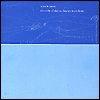 Aeron Bergman is a founding member of NYC based label Lucky KitchenRecords and this CD is his first for Germany's Tom. "The Tale of theUnhappy American" is a science fiction fairy tale told with words andsounds. Eleven short spoken word tracks are followed by correspondingmusical tracks, all less than four minutes, often to interpret theaction of each scene. The story follows the narrator's journey from thesurroundings of home to a futuristic battlefield and beyond via a hoverbike. There doesn't seem to be any sort of moral really, just a briefadventure then back home. The music is predominantly pretty ambientelectronic twinkles, waves, drones, static and gurgles, with theoccasional noisier passage. These sounds, despite being electronicand/or computer generated as I believe they are, feel very naturalalmost as if they are field recordings of the sounds of insects, powerlines, flight, water, battle, machines, different times of day/night,etc. There's a child-like naiveté to everything here: the concept,story, the music and the packaging. And it works. It's simply cute,fun, warm and relaxing. Next up for Bergman, as 1/2 of Alejandra andAeron, are "Kitchen" a split 12" on Fat Cat and "The Tale of Pip" fulllength on Autobus/LK in April and May ...
Aeron Bergman is a founding member of NYC based label Lucky KitchenRecords and this CD is his first for Germany's Tom. "The Tale of theUnhappy American" is a science fiction fairy tale told with words andsounds. Eleven short spoken word tracks are followed by correspondingmusical tracks, all less than four minutes, often to interpret theaction of each scene. The story follows the narrator's journey from thesurroundings of home to a futuristic battlefield and beyond via a hoverbike. There doesn't seem to be any sort of moral really, just a briefadventure then back home. The music is predominantly pretty ambientelectronic twinkles, waves, drones, static and gurgles, with theoccasional noisier passage. These sounds, despite being electronicand/or computer generated as I believe they are, feel very naturalalmost as if they are field recordings of the sounds of insects, powerlines, flight, water, battle, machines, different times of day/night,etc. There's a child-like naiveté to everything here: the concept,story, the music and the packaging. And it works. It's simply cute,fun, warm and relaxing. Next up for Bergman, as 1/2 of Alejandra andAeron, are "Kitchen" a split 12" on Fat Cat and "The Tale of Pip" fulllength on Autobus/LK in April and May ... 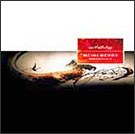 This year, 4AD's UK office has been reintroducing the public to thecatalogue of some of their former brightest stars. Heidi Berry'santhology "Pomegranate" gathers 14 songs from her three 4AD albums andadds a few extra bits. 4AD fans might not know her name but they sureknow her voice, as it's all over the final This Mortal Coil album,'Blood'. Her first album was released in 1989 but her first record for4AD, 'Love' was released in 1991 shortly after This Mortal Coil's'Blood'. 'Pomegranate' jumbles up her tracks in a non-chronologicalorder, with the basic folk-inspired acoustic songs interwoven withsongs with lush string arrangements and captivating swirling pianomelodies. There's something magical about that voice which shines invarious spots but can also get quite improperly placed when accompaniedby the Lost Girls in the collection's closer, "Needle's Eye".
This year, 4AD's UK office has been reintroducing the public to thecatalogue of some of their former brightest stars. Heidi Berry'santhology "Pomegranate" gathers 14 songs from her three 4AD albums andadds a few extra bits. 4AD fans might not know her name but they sureknow her voice, as it's all over the final This Mortal Coil album,'Blood'. Her first album was released in 1989 but her first record for4AD, 'Love' was released in 1991 shortly after This Mortal Coil's'Blood'. 'Pomegranate' jumbles up her tracks in a non-chronologicalorder, with the basic folk-inspired acoustic songs interwoven withsongs with lush string arrangements and captivating swirling pianomelodies. There's something magical about that voice which shines invarious spots but can also get quite improperly placed when accompaniedby the Lost Girls in the collection's closer, "Needle's Eye". 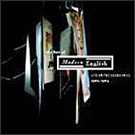 "Life in the Gladhouse" collects 16 album and single tracks from ModernEnglish between the years 1980 and 1984. While most people in the worldwill only credit them for the mega retro feel-good 80s anthem "I MeltWith You," the group had a much darker, angry and artful repertoirestretching over the course of three notable albums. Program the CD toplay the songs in chronological order and you can see how the groupcame into existence during the punk movement and exited during theearly 80s wave of new romantics. While I don't usually agree to "bestof" compilations from groups who only have three albums represented, acollection like this or Heidi Berry's will be helpful to people who arefamiliar with the small slice, but interested in hearing more. InModern English's case it's the big hit, only popularized long after itsinception, Heidi Berry's case being the voice of 'Blood.'
"Life in the Gladhouse" collects 16 album and single tracks from ModernEnglish between the years 1980 and 1984. While most people in the worldwill only credit them for the mega retro feel-good 80s anthem "I MeltWith You," the group had a much darker, angry and artful repertoirestretching over the course of three notable albums. Program the CD toplay the songs in chronological order and you can see how the groupcame into existence during the punk movement and exited during theearly 80s wave of new romantics. While I don't usually agree to "bestof" compilations from groups who only have three albums represented, acollection like this or Heidi Berry's will be helpful to people who arefamiliar with the small slice, but interested in hearing more. InModern English's case it's the big hit, only popularized long after itsinception, Heidi Berry's case being the voice of 'Blood.'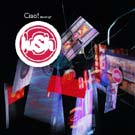 "Ciao!,"on the other hand makes less sense. The group's popularity was muchstronger and to release a best of from a group also with a three-albumcareer like this is rather unnecesary. Unlike the past two collections,there is a chronological order executed here, in reverse however. Thedisc only grabs a few hits and some popular album tracks, heavy on thecatty most recent stuff (including the gratuitous Javis Crocker duetfrom 'Lushlife') and light on the beautiful two-girl harmonies onlayers upon layers of guitar wash, which captured everybody's attentionand love of the group in the first place. I fell in love with Lush'smusic over a decade ago and still hold much of their music dear to myheart, yet I'm not endorsing this collection. If they really wanted torelease a worthy retrospective, a collection of b-sides and compilationtracks would be wonderful. Over their short career, the group hasaccumulated an impressive non-album repertoire which couldn't fit onanything less than two lengthy compact discs.
"Ciao!,"on the other hand makes less sense. The group's popularity was muchstronger and to release a best of from a group also with a three-albumcareer like this is rather unnecesary. Unlike the past two collections,there is a chronological order executed here, in reverse however. Thedisc only grabs a few hits and some popular album tracks, heavy on thecatty most recent stuff (including the gratuitous Javis Crocker duetfrom 'Lushlife') and light on the beautiful two-girl harmonies onlayers upon layers of guitar wash, which captured everybody's attentionand love of the group in the first place. I fell in love with Lush'smusic over a decade ago and still hold much of their music dear to myheart, yet I'm not endorsing this collection. If they really wanted torelease a worthy retrospective, a collection of b-sides and compilationtracks would be wonderful. Over their short career, the group hasaccumulated an impressive non-album repertoire which couldn't fit onanything less than two lengthy compact discs.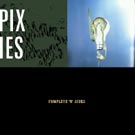 ThePixies were arguably one of the most influential bands of the late 80sand also arguably the last truly alternative band to gain recognitionon a large scale. They intelligently and almost accidentally combinedsmart riffs with surf-punk and abstract lyrics with hooks catchy enoughto make Lennon and McCartney jealous. In 1991, following the band'sfinal album, Nirvana fucked everything up, thrusting recycled Pixiesriffs repackaged as 'grunge' into the mainstream, merging 'alternative'and top 40 radio, forcing them all to cater to the new incarnation ofpop music. Thankfully it also surpressed hair bands, until thefollowing year when Pearl Jam surfaced as a repackaged Winger. I couldgo on for hours on the subsequent decline in individuality andextinction of daring record companies whose risk-taking was high andrewards were somewhat honorable, but that's another essay. That asidethis collection, 'The Complete B-Sides' doesn't do much more than itclaims, collecting all the singles tracks which didn't appear on thealbums, in chronological order from the start. Absent however are acouple lingering other tracks which appeared on compilations like'Rubyat' and 'I'm Your Fan: Songs of Leonard Cohen.' As a bonus acouple of their music videos are included - their breathrough hit,"Here Comes Your Man" and "Alison," which sadly enough omits the entirefirst part of the music video, "Dig for Fire." The commentary byCharlie Thompson (currently known as Frank Black, formerly known asBlack Francis) is short and direct, not surprisingly so as he's alwaysseemed to be more enthusiastic about current projects than reflectiveof his glory days in the Pixies.
ThePixies were arguably one of the most influential bands of the late 80sand also arguably the last truly alternative band to gain recognitionon a large scale. They intelligently and almost accidentally combinedsmart riffs with surf-punk and abstract lyrics with hooks catchy enoughto make Lennon and McCartney jealous. In 1991, following the band'sfinal album, Nirvana fucked everything up, thrusting recycled Pixiesriffs repackaged as 'grunge' into the mainstream, merging 'alternative'and top 40 radio, forcing them all to cater to the new incarnation ofpop music. Thankfully it also surpressed hair bands, until thefollowing year when Pearl Jam surfaced as a repackaged Winger. I couldgo on for hours on the subsequent decline in individuality andextinction of daring record companies whose risk-taking was high andrewards were somewhat honorable, but that's another essay. That asidethis collection, 'The Complete B-Sides' doesn't do much more than itclaims, collecting all the singles tracks which didn't appear on thealbums, in chronological order from the start. Absent however are acouple lingering other tracks which appeared on compilations like'Rubyat' and 'I'm Your Fan: Songs of Leonard Cohen.' As a bonus acouple of their music videos are included - their breathrough hit,"Here Comes Your Man" and "Alison," which sadly enough omits the entirefirst part of the music video, "Dig for Fire." The commentary byCharlie Thompson (currently known as Frank Black, formerly known asBlack Francis) is short and direct, not surprisingly so as he's alwaysseemed to be more enthusiastic about current projects than reflectiveof his glory days in the Pixies. 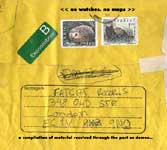 While the Fat Cat people boast about their committment to introducingfresh new artists, they've played the game relatively safe for theirentire existence. A successful record label has to establish themselvespretty much before they can make bold moves like this one, releasing aCD comprised entirely of demos received by the label from completeunknowns. Fat Cat established themselves by releasing an assortment ofbuzzworthy 12" split singles, sneaking in a relatively unknown act onone side with an established act on the other side. In sales it'scalled the "foot in the door technique" — now that we've got yourattention, try this! The label's intentions are well and this techniquesure paid off.
While the Fat Cat people boast about their committment to introducingfresh new artists, they've played the game relatively safe for theirentire existence. A successful record label has to establish themselvespretty much before they can make bold moves like this one, releasing aCD comprised entirely of demos received by the label from completeunknowns. Fat Cat established themselves by releasing an assortment ofbuzzworthy 12" split singles, sneaking in a relatively unknown act onone side with an established act on the other side. In sales it'scalled the "foot in the door technique" — now that we've got yourattention, try this! The label's intentions are well and this techniquesure paid off. 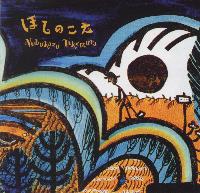 It isn't until the fifth track of 'Hoshi No Koe' that you hear musicstrongly resembling the majority of Nobukazu Takemura's previous work.In and of itself, this isn't such a bad thing. To continue to rely onthe same reverb-laden, scratched, looped, and manipulated CD soundswhich have come to be so closely associated with Takemura (as well ashis "Child's View" alias) would have been redundant, if still quitepleasant to listen to. With the release of the "Sign" 12-inch a fewmonths back, Takemura signaled a shift away from the avant-gardeindulgence of 15-minute tracks of skipping digital beats, and towardsan almost danceable mix of vocoder-enhanced vocals, 4/4 rhythms, andcatchy melodies - and which kept his trademark sound as coolornamentation to what was his most single-y track yet.
It isn't until the fifth track of 'Hoshi No Koe' that you hear musicstrongly resembling the majority of Nobukazu Takemura's previous work.In and of itself, this isn't such a bad thing. To continue to rely onthe same reverb-laden, scratched, looped, and manipulated CD soundswhich have come to be so closely associated with Takemura (as well ashis "Child's View" alias) would have been redundant, if still quitepleasant to listen to. With the release of the "Sign" 12-inch a fewmonths back, Takemura signaled a shift away from the avant-gardeindulgence of 15-minute tracks of skipping digital beats, and towardsan almost danceable mix of vocoder-enhanced vocals, 4/4 rhythms, andcatchy melodies - and which kept his trademark sound as coolornamentation to what was his most single-y track yet.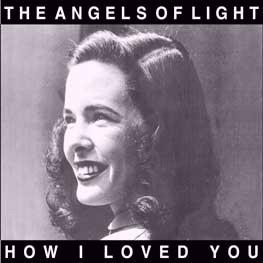 The Angels of Light are the current song writing device of Michael Gira of Young God Records. How I Loved You, follow-up to 1999's superb debut New Mother, commits to tape many of the songs from the now legendary first tour and others written since. It is a collection of love songs of sorts with references to various women and Gira's parents, whom grace the front and back cover of the digipack.
The Angels of Light are the current song writing device of Michael Gira of Young God Records. How I Loved You, follow-up to 1999's superb debut New Mother, commits to tape many of the songs from the now legendary first tour and others written since. It is a collection of love songs of sorts with references to various women and Gira's parents, whom grace the front and back cover of the digipack.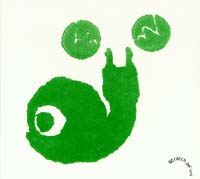 The debut full-length from Belgium's Scratch Pet Land resembles what anaudio Rorscharch Test might sound like. Fans of the quirky Sonig soundfrom groups like Vert, Mouse On Mars and Wang Inc. should be warnedthat the proverbial happy blippy sounds don't really jump in until thefourth track and don't stay very long as this German duo seems to havean amazingly short span of attention. Given the chance however, thisfull-length debut is quite pleasing, with creative crack addict-likemelodies and noisy audio scribbles. There are spots where the soundsappear to be strange mutated samples of kids hiccuping in a playground,short tunes of randomized aural splotches, or a musicallyimpressionistic walk across a stained glass carpet crunching betweenyour feet. When the melodies do arrive they stand as shining moments ofan almost Kraftwerkian tributary nature. Forty-two minutes of randomtest tones, pots, pans, circus animals, babies and flying saucer soundslater I'm left somewhat confused, but rather satisfied.
The debut full-length from Belgium's Scratch Pet Land resembles what anaudio Rorscharch Test might sound like. Fans of the quirky Sonig soundfrom groups like Vert, Mouse On Mars and Wang Inc. should be warnedthat the proverbial happy blippy sounds don't really jump in until thefourth track and don't stay very long as this German duo seems to havean amazingly short span of attention. Given the chance however, thisfull-length debut is quite pleasing, with creative crack addict-likemelodies and noisy audio scribbles. There are spots where the soundsappear to be strange mutated samples of kids hiccuping in a playground,short tunes of randomized aural splotches, or a musicallyimpressionistic walk across a stained glass carpet crunching betweenyour feet. When the melodies do arrive they stand as shining moments ofan almost Kraftwerkian tributary nature. Forty-two minutes of randomtest tones, pots, pans, circus animals, babies and flying saucer soundslater I'm left somewhat confused, but rather satisfied.  Thomas Brinkmann is a prolific producer of numerous minimal/experimental techno platters, both digital and analogue. His tools here are simple but unique: a knife, a pile of old records, 2 turntables, a mixer, an isolator and an effects unit. If I'm to understand the process correctly, Brinkmann literally cut the locked grooves into the records and then played and mixed them to create the 10 4-7 minute, binary titled tracks.
Thomas Brinkmann is a prolific producer of numerous minimal/experimental techno platters, both digital and analogue. His tools here are simple but unique: a knife, a pile of old records, 2 turntables, a mixer, an isolator and an effects unit. If I'm to understand the process correctly, Brinkmann literally cut the locked grooves into the records and then played and mixed them to create the 10 4-7 minute, binary titled tracks.
